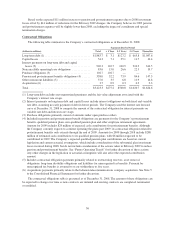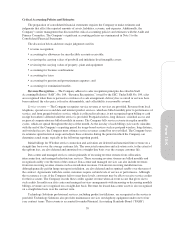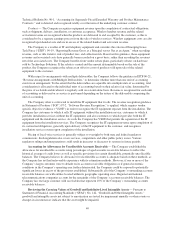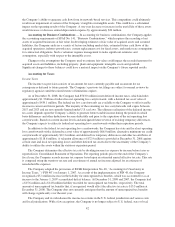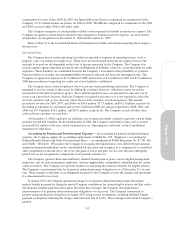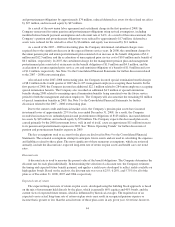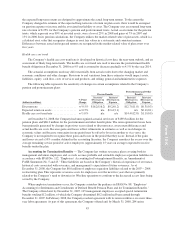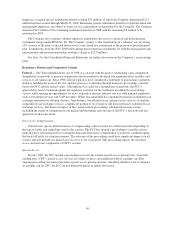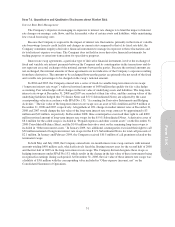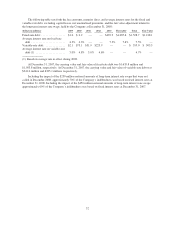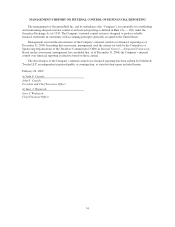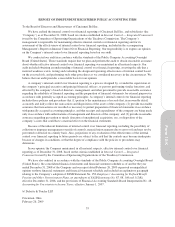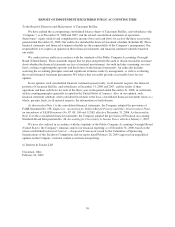Cincinnati Bell 2008 Annual Report Download - page 146
Download and view the complete annual report
Please find page 146 of the 2008 Cincinnati Bell annual report below. You can navigate through the pages in the report by either clicking on the pages listed below, or by using the keyword search tool below to find specific information within the annual report.employees accepted special termination benefits totaling $25 million, of which the Company determined $22.1
million had been earned through March 31, 2008. Remaining special termination benefits for both the union and
management employees are subject to future service requirements as determined by the Company. The Company
amortized $4.9 million of the remaining termination benefits in 2008 with the remaining $2 million to be
amortized in 2009.
The Company also considers whether employee terminations give rise to a pension and postretirement
curtailment charge under SFAS No. 88. The Company’s policy is that terminations in a calendar year involving
10% or more of the plan’s expected future service years result in a curtailment of the pension or postretirement
plan. Terminations from the 2007-2008 restructuring plan resulted in curtailments for both the management and
union pension and postretirement plans totaling a charge of $21.9 million.
See Note 3 to the Consolidated Financial Statements for further discussion on the Company’s restructuring
plans.
Regulatory Matters and Competitive Trends
Federal — The Telecommunications Act of 1996 was enacted with the goal of establishing a pro-competitive,
deregulatory framework to promote competition and investment in advanced telecommunications facilities and
services to all Americans. Since 1996, federal regulators have considered a multitude of proceedings ostensibly
aimed at fulfilling the goals of the Act, and this process is continuing through numerous proceedings currently
before the FCC and the federal courts. Although the Act called for a deregulatory framework, the FCC’s
approach has been to maintain significant regulatory restraints on the traditional incumbent local exchange
carriers while opening up opportunities for new competitive entrants and new services with minimal regulation
such as broadband services and VoIP providers. While Cincinnati Bell has expanded beyond its incumbent local
exchange operations by offering wireless, long distance, broadband service, internet access and out-of-territory
competitive local exchange services, a significant portion of its revenue is still derived from its traditional local
exchange services. The financial impact of the various federal proceedings will depend on many factors
including the extent of competition in our market and the timing and outcome of the FCC’s decisions and any
appeals from those decisions.
Intercarrier Compensation
Current rules specify different means of compensating carriers for the use of their networks depending on
the type of traffic and technology used by the carriers. The FCC has opened a proceeding to consider various
plans that have been proposed for revising the disparate intercarrier compensation system into a unified regime
that treats all traffic in a uniform manner. The outcome of this proceeding could have significant impacts on all
carriers and will probably be phased-in over a five to ten year period. This proceeding impacts the switched
access and end-user components of CBT’s revenue.
Special Access
In early 2005, the FCC opened a proceeding to review the current special access pricing rules. Under the
existing rules, CBT’s special access services are subject to price cap regulation with no earnings cap. This
ongoing proceeding reexamines the entire special access pricing structure, including whether or not to reinstate
an earnings cap. In 2007, the FCC invited interested parties to update the record.
46


